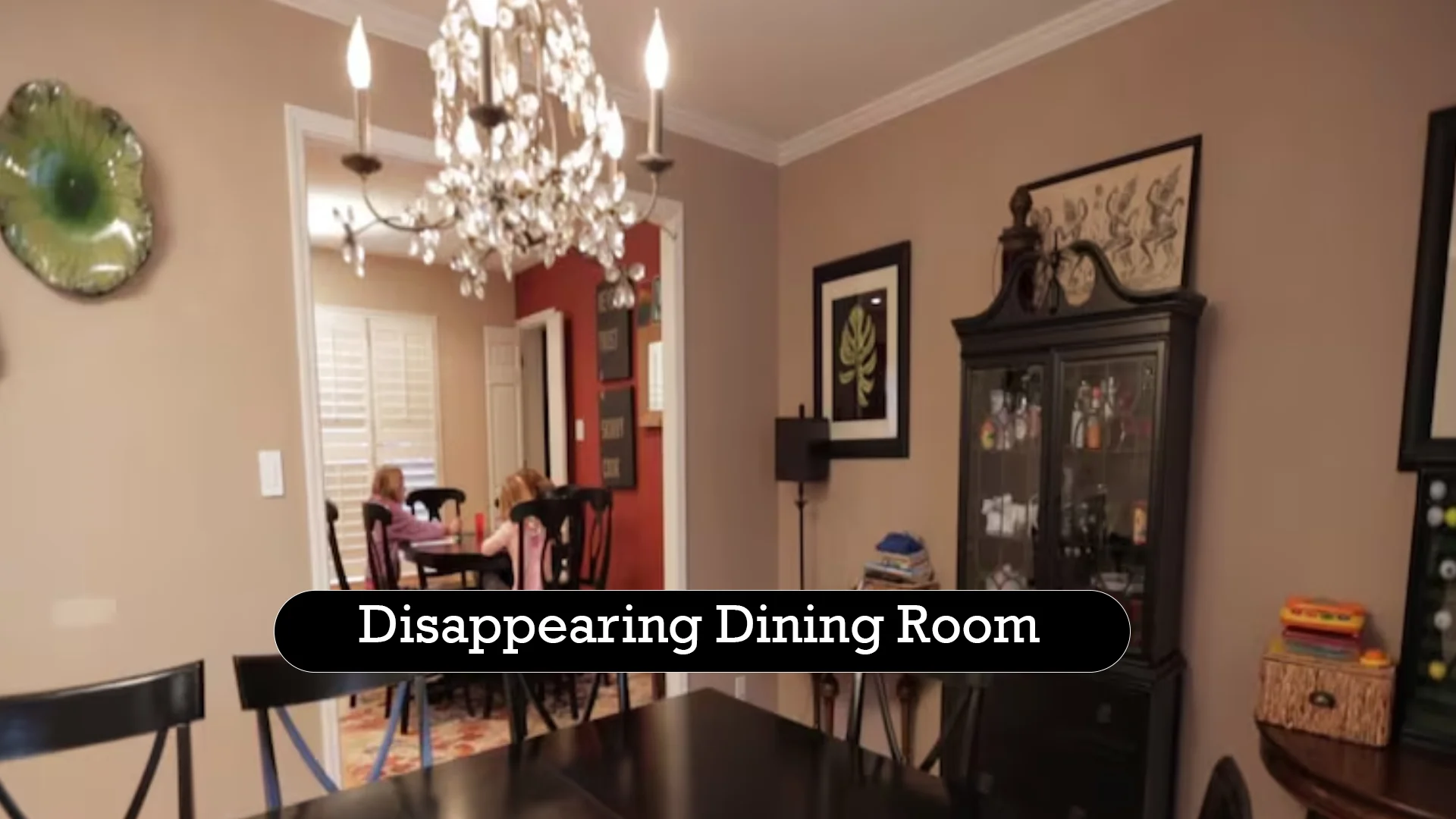In recent years, the concept of dining rooms has evolved significantly. Once a staple in every home, dining rooms are becoming increasingly less common, giving way to open-plan living and multifunctional spaces. This shift is driven by changing lifestyles, evolving home designs, and new ways of living. This article explores the trends contributing to the decline of traditional dining rooms and offers innovative solutions to adapt to this evolving trend.
TRENDING
Top Naltrexone 4.50mg Side Effects You Should Be Aware Of
The Decline Of The Traditional Dining Room
Changing Lifestyles And Preferences
The traditional dining room, once considered a central gathering place for family meals and special occasions, is becoming less relevant in modern homes. Several factors contribute to this decline:
- Open-Plan Living: Modern home designs favor open-plan layouts that combine the kitchen, dining, and living areas into one large space. This design approach promotes a more social and inclusive environment, allowing family members to interact while cooking, dining, and relaxing.
- Busy Lifestyles: Today’s fast-paced lifestyle often means that family members have varied schedules and may not gather for meals at the same time. This shift has led to a preference for informal dining areas that can accommodate spontaneous meal times and casual gatherings.
- Space Optimization: As urban living spaces become smaller, maximizing every square foot is essential. Many homeowners opt for multifunctional spaces where the dining area can easily transform into other uses, reducing the need for a separate, dedicated dining room.
- Entertainment Trends: With the rise of home entertainment systems and informal dining options like breakfast bars and kitchen islands, the traditional dining room is less critical for hosting guests and family gatherings.
Evolving Home Designs
Home design trends reflect a broader shift in how people use their living spaces. Here are some key design trends impacting the decline of traditional dining rooms:
- Multi-Functional Spaces: Contemporary home designs emphasize versatility. Dining rooms are often replaced by spaces that can serve multiple purposes, such as home offices, playrooms, or guest rooms. This flexibility caters to the diverse needs of modern families.
- Integrated Kitchens: Modern kitchens often feature open, flowing layouts that extend into dining areas. This integration eliminates the need for a separate dining room and creates a cohesive space where cooking and dining are seamlessly connected.
- Minimalist Design: The minimalist movement prioritizes simplicity and functionality. As a result, many homeowners are opting for fewer, more versatile rooms rather than traditional, specialized spaces.
Solutions For Adapting To The Trend
While traditional dining rooms are on the decline, there are several ways to adapt and make the most of modern design trends. Here are some practical solutions for integrating dining into contemporary living spaces:
Flexible Dining Areas
Incorporate flexible dining areas that can easily be adapted to various needs. Consider the following:
- Extendable Tables: Choose dining tables with extension capabilities to accommodate different numbers of guests. This allows for flexibility during gatherings and everyday use.
- Fold-Down Tables: Wall-mounted, fold-down tables can be a space-saving solution. They provide a dining surface when needed and can be tucked away to free up space when not in use.
- Convertible Furniture: Furniture that serves multiple purposes, such as a dining table that doubles as a workspace or a storage unit, can optimize space and functionality.
Integrated Dining Solutions
Integrate dining areas into other parts of the home for a seamless design:
- Breakfast Bars and Islands: Incorporate a breakfast bar or kitchen island that serves as a casual dining spot. These features provide a convenient place for quick meals and socializing without requiring a separate dining room.
- Built-In Seating: Create built-in seating areas with custom benches or banquettes. These can be designed to fit snugly into corners or alcoves, offering a cozy dining experience within an open-plan space.
- Multi-Purpose Rooms: Design rooms that can be easily transformed for different uses. For example, a room with a dining table that can be reconfigured as a home office or entertainment area provides versatility and maximizes space.
Creating a Dining Nook
Even without a formal dining room, you can carve out a dedicated dining nook within your home:
- Corner Nooks: Utilize empty corners or alcoves to create a small dining nook. Add a compact table and chairs or a built-in bench to establish a cozy and functional dining area.
- Partitioning: Use partitions or sliding doors to create a semi-enclosed dining space within a larger room. This approach provides a sense of separation while maintaining an open feel.
- Room Dividers: Stylish room dividers or curtains can help delineate a dining area from the rest of the living space, offering privacy and defining the space without fully enclosing it.
Emphasizing Aesthetic Integration
Ensure that any dining area you create complements the overall aesthetic of your home:
- Design Consistency: Match the dining area’s decor with the rest of the home to maintain a cohesive look. Use similar materials, colors, and styles to ensure that the dining space blends seamlessly with its surroundings.
- Lighting: Proper lighting can enhance the dining experience and make the space feel inviting. Consider pendant lights or chandeliers that add character and focus on the dining area while harmonizing with the overall design.
- Decorative Elements: Incorporate decorative elements such as artwork, plants, or textiles to create a welcoming atmosphere. These touches can add personality and warmth to your dining area.
Conclusion
The traditional dining room may be disappearing, but this trend reflects broader changes in lifestyle and home design. By embracing flexible, multifunctional spaces and integrating dining areas into open-plan designs, homeowners can adapt to modern living while still enjoying the benefits of shared meal times and gatherings.
Whether through versatile furniture, creative design solutions, or aesthetic integration, there are numerous ways to make the most of dining spaces in today’s homes. As trends continue to evolve, staying attuned to your needs and preferences will help you create a dining experience that fits seamlessly into your lifestyle.
ALSO READ: Unlocking The Secrets Of Süberlig: A Comprehensive Guide











